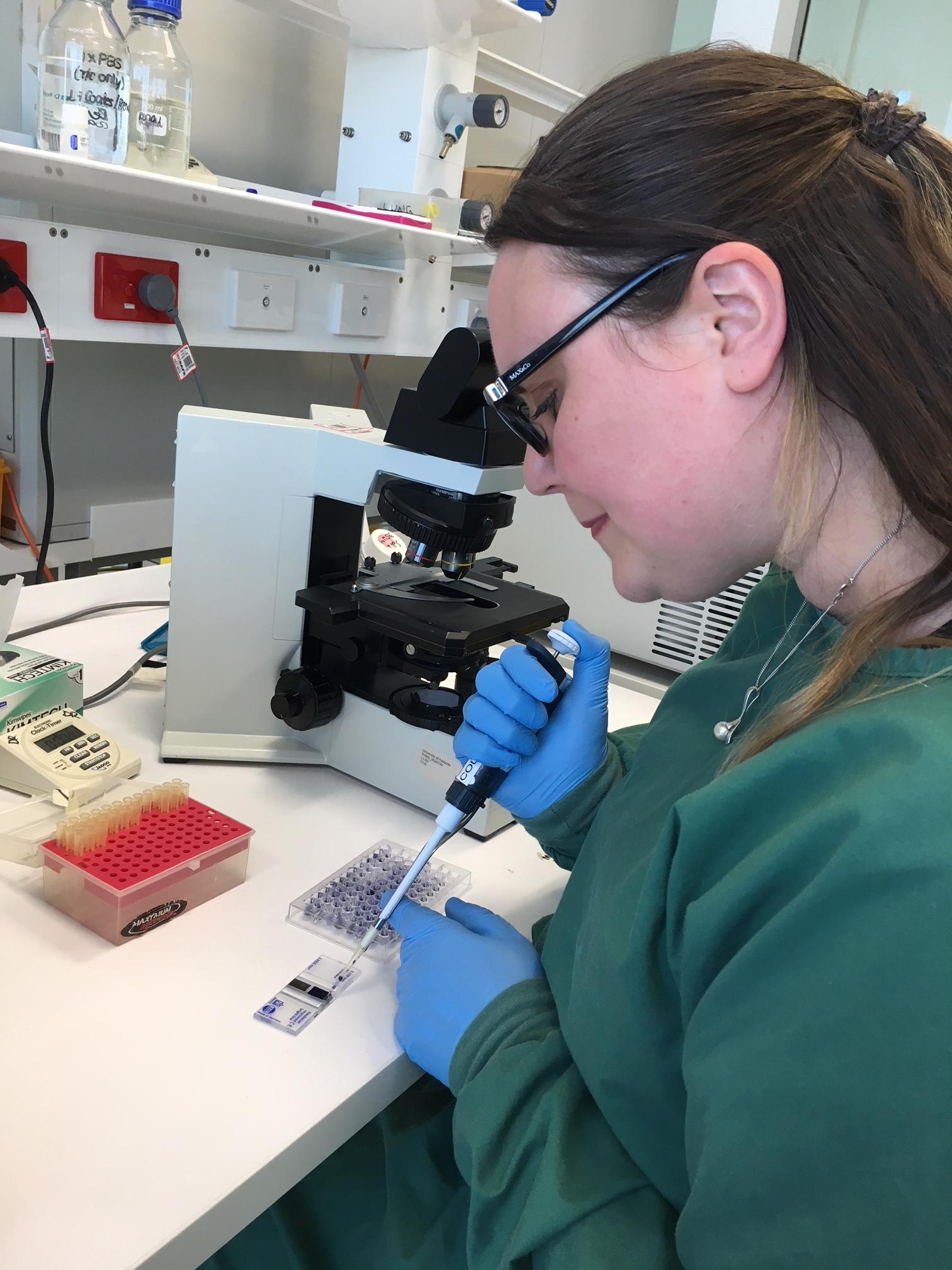
Dr Miranda Ween
The flavour on the bottle of E-liquids is no indication of the potentially harmful effects of one compared with another.
Dr Miranda Ween from the University of Adelaide and South Australia's Royal Adelaide Hospital led a study, in collaboration with Dr Laura E. Crotty Alexander at the University of California San Diego, to investigate the lung health risks of E-cigarette vapour from a number of different flavoured E-liquids.
"We studied the level of toxicity from 10 different flavoured E-cigarette vapours to the cells that line the lungs and how lung immune cells - macrophages - cleared away bacteria from healthy non-smoking donors, replicating the possible harm to non-smokers who use E-cigarettes," said Dr Ween.
"Lung cell toxicity and bacterial clearance by macrophages was affected by almost every flavour, but some such as mango and tobacco showed minimal toxicity and immune effects."
"Banana had moderate effects, and chocolate in particular had an unexpectedly high impact, killing almost all the cells and blocked the ability of macrophages to clear away bacteria almost entirely."
"The flavouring chemicals included, how many different ones are in the E-liquid, and how much of each goes into an E-liquid can all contribute to how much damage they may be doing to the lungs."Dr Miranda Ween
E-liquid is made up of propylene glycol, vegetable glycerine, and flavourings, and, outside Australia, often sold containing nicotine. Battery operated E-cigarettes heat the E-liquid to produce an aerosol, commonly known as vapour, that the 'vaper' inhales. They were designed to replace cigarettes and thus deliver aerosol vapour directly to the consumer's lungs. However, their popularity amongst never-smokers is increasing with 6.9 per cent of non-smoking Australians having tried one by 2019. Ninety per cent of E-cigarette products sold globally are made in China. In 2019, the global E-cigarette market was valued at US $12.41 billion and is expected to expand.
"Ninety-nine per cent of E-cigarette liquids are flavoured. To create these flavour profiles, companies are adding multiple chemicals to achieve that 'perfect' taste," said Laura Crotty Alexander, MD, associate professor of medicine in the Division of Pulmonary, Critical Care and Sleep Medicine at University California San Diego and Section Chief of Pulmonary Critical Care at the VA San Diego Healthcare System. "These chemicals have been found to be toxic to the lungs. When inhaled, they wreak havoc on the lungs and affect specialised protein levels that help keep the body's immune system on track."
With thousands of different flavours ranging from the simple sounding banana and mango to the more ambiguous such as Unicorn Puke and Stoned Smurf, and ingredients not required to be listed on the bottle, it is impossible for users to know what they are inhaling.
"Our study demonstrated to us that the name on the bottle is not what is important, it is what goes into the E-liquids and put into E-cigarettes which matters," said Dr Ween.
"The flavouring chemicals included, how many different ones are in the E-liquid, and how much of each goes into an E-liquid can all contribute to how much damage they may be doing to the lungs."
Further study into a number of chocolate and banana flavoured E-liquids made by several companies showed that the toxicity and immune effects were not the same between brands, and mass spectrometry analysis showed that the flavouring chemical compositions and their concentrations were different.
"E-liquids with the highest levels of benzene-rich flavouring chemicals had the greatest toxicity and immune cell dysfunction, whilst those with no or low levels of benzene-rich flavouring chemicals tended to show minimal damage," said Dr Ween.
"Both types of cells from the healthy donors also showed abnormal inflammation response markers when exposed to E-cigarette vapour. When vapers were recruited at UC San Diego to investigate this further, their saliva was found to also show an abnormal immune response markers compared with non-vaping/non-smoking controls."
This study points to vapers having possible difficulties responding to lung infections.
"We hear a lot about banning specific flavours of e-liquids as the way to move forward, but this study shows that the name on the bottle isn't what needs to be controlled to reduce the risks to vapers, and that allowed flavours need to be well defined," said Dr Ween.
"This could easily be achieved by only limiting E-liquids to a single flavouring chemical which has had its effects in the lung tested and safe concentrations determined, instead of banning a particular flavour name."
"Most importantly, we need major funding for independent research into which flavours represent the lowest levels of risk, something Australia is currently lacking."
Additional co-authors of the study include: John Shin, Christine Bojanowski, Alex Moshensky from the University California San Diego and VA San Diego HealthCare System; Nicole Bastian, Rhys Hamon, Arash Badiei, Phan Tien Nguyen, Kirsty Herewane, Hubertus Jersmann, Paul N. Reynolds and Sandra J. Hodge from University of Adelaide School of Medicine and the Royal Adelaide Hospital and Leigh Thredgold from the University of Adelaide School of Public Health.
The study is published in the American Journal of Physiology - Lung Cellular and Molecular Physiology.






